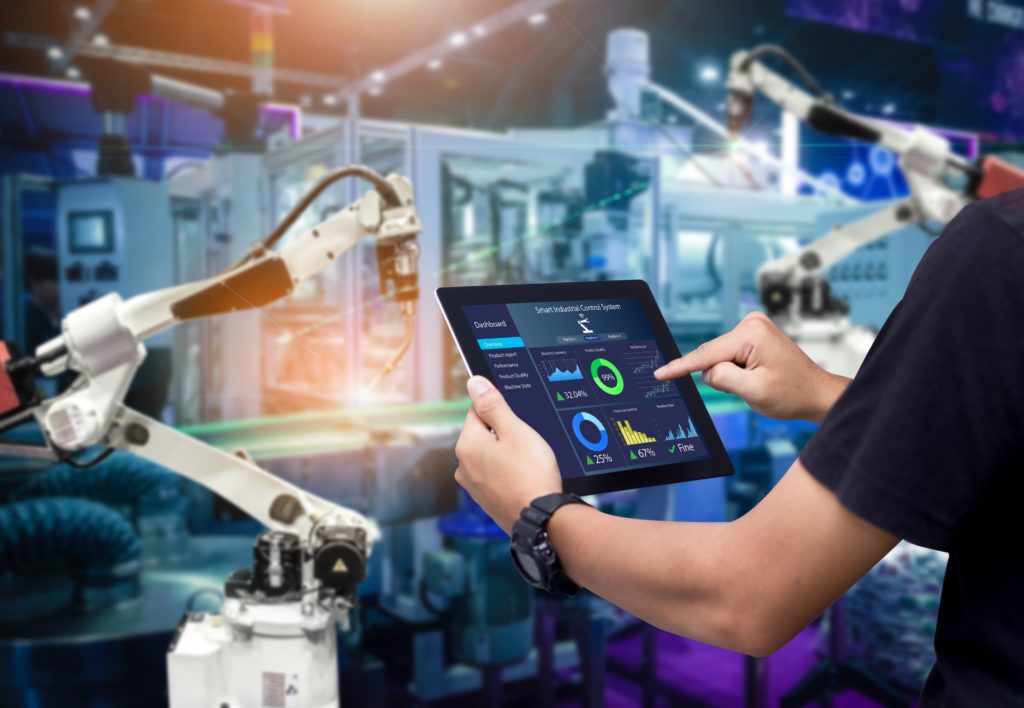Medical Device Premarket Approval
Premarket Approval (PMA)
Medical Device – Premarket Approval (PMA)
Premarket approval (PMA) is the Food and Drug Administration (FDA) process of scientific and regulatory review to evaluate the safety and effectiveness of Class III medical devices. In order to import medical devices subject to PMA into the U.S., the device must have FDA approval through the PMA process as well as meet all applicable FDA regulatory requirements. Foreign establishments must comply with these applicable regulations before, during, and after the medical device is imported into the United States or territory. FDA does not recognize regulatory approvals from other countries.
When an imported medical device requires premarket approval, the FDA will verify the declared PMA by comparing the submitted information to the data systems of the Center for Devices and Radiological Health (CDRH). If the PMA information and number is not supplied, or is incomplete or inaccurate, it may delay the review of your entry.
In-Depth Coverage: Importing Medical Device
PMA is the most stringent regulatory category for medical devices. The applicant must receive FDA approval of its PMA application prior to marketing the device. PMA approval is based on a determination by FDA that the PMA contains sufficient valid scientific evidence to assure that the device is safe and effective for its intended use(s).
Usually, Class III devices are those that support or sustain human life, are of substantial importance in preventing impairment of human health, or which present a potential, unreasonable risk of illness or injury. Due to the level of risk associated with Class III devices, FDA has determined that general and special controls alone are insufficient to assure the safety and effectiveness of Class III devices. Therefore, these devices require a premarket approval (PMA) application in order to obtain marketing approval.
The PMA applicant is usually the person who owns the rights, or otherwise has authorized access, to the data and other information to be submitted in support of FDA approval. This person may be an individual, partnership, corporation, association, scientific or academic establishment, government agency or organizational unit, or other legal entity. The applicant is often the inventor/developer and ultimately the manufacturer.
A Class III device that fails to meet PMA requirements is considered to be adulterated under section 501(f) of the FD&C Act and may not be marketed.
In-Depth Coverage: Marketing and Advertising Compliance
- Federal Trade Commission (FTC) Advertising Rules
- Made in USA Standard
- FTC Regulation on Environmental Claims
- Adverting and Marketing on the Internet
- Label Claims for Conventional Foods and Dietary Supplements
- Dietary Supplement Advertising: What is FTC's Truth-in-Advertising Law?
- USDA Country of Origin Labeling (COOL)
- FTC Rules & Regulations on Food Advertisement
Devices Used in Blood Establishments are Regulated by CBER
The Center for Biologics, Evaluation, and Research (CBER) has expertise in blood, blood products, and cellular therapies as well as the integral association of certain medical devices with these biological products. To utilize this expertise marketing and investigational device submissions (Premarket Notification, Premarket Approval, and Investigational Device Exemption) for medical devices associated with the blood collection and processing procedures as well as those associated with cellular therapies are reviewed by CBER. Although these products are reviewed by CBER, the medical device laws and regulations still apply.
Data Requirements
A Premarket Approval (PMA) application is a scientific, regulatory documentation to the FDA to demonstrate the safety and effectiveness of the Class III device. There are administrative elements of a PMA application, but good science and scientific writing is a key to the approval of PMA application. If a PMA application lacks elements listed in the administrative checklist, FDA will refuse to file a PMA application and will not proceed with the in-depth review of scientific and clinical data. If a PMA application lacks valid clinical information and scientific analysis on sound scientific reasoning, it could impact the FDA's review and approval.
PMA applications that are incomplete, inaccurate, inconsistent, omit critical information, and poorly organized have resulted in delays in approval or denial of those applications. Manufacturers should perform a quality control audit of a PMA application before sending it to FDA to assure that it is scientifically sound and presented in a well-organized format.
In-Depth Coverage: Customs Valuation
What is Benefit-Risk Determination?
Factors FDA Considers in Making Benefit-Risk Determinations: Benefit-Risk Determinations are the assessment of the benefits and risks of using of a medical device performed by the FDA during the premarket review process for certain medical devices. FDA determines whether PMA applications provide a “reasonable assurance of safety and effectiveness” by “weighing any probable benefit to health from the use of the device against any probable risk of injury or illness from such use,” among other relevant factors.
PMA sponsors submit valid scientific evidence, including one or more clinical investigations where appropriate, which FDA reviews to determine whether “the device will have the effect it purports or is represented to have under the conditions of use prescribed, recommended, or suggested in the labeling of the device.”
FDA staff review the data submitted as part of the PMA application and determine – based on a number of factors – if the data support the claims made by the sponsor concerning clinically significant results from the device, i.e., intended use and indications for use, and if the data analysis demonstrates that the probable benefits of the device outweigh its probable risks. A balanced consideration of probable benefits and probable risks is an essential part of the FDA’s determination that there are reasonable assurances of safety and effectiveness.
The factors FDA considers as part of the benefit-risk determination are:
A. Assessment of the Benefits of Devices
- Extent of the probable benefit(s): FDA assesses information provided in a PMA application or De Novo request concerning the extent of the probable benefit(s) by taking into account the following factors individually and in the aggregate:
- The type of benefit(s) – examples include but are not limited to the device’s impact on clinical management, patient health, and patient satisfaction in the target population, such as significantly improving patient management and quality of life, reducing the probability of death, aiding improvement of patient function, reducing the probability of loss of function, and providing relief from symptoms.
- The magnitude of the benefit(s) – The change in participants’ condition or clinical management as measured on that scale, or as determined by an improvement or worsening of the endpoint.
- The probability of the patient experiencing one or more benefit(s) – based on the data provided, it is sometimes possible to predict which patients may experience a benefit, whereas other times this cannot be well predicted.
- The duration of effect(s) (i.e., how long the benefit can be expected to last for the patient) – some treatments are curative, whereas, some may need to be repeated frequently over the patient’s lifetime. To the extent that it is known, the duration of a treatment’s effect may directly influence how its benefit is defined. Treatments that must be repeated over time may introduce greater risk, or the benefit experienced may diminish each time the treatment is repeated.
B. Assessment of the Risks of Devices
Extent of the probable risk(s)/harm(s): FDA assesses the extent of the probable risk(s)/harm(s) by taking into account the following factors individually and in the aggregate:
- Severity, types, number and rates11 of harmful events associated with the use of the device:
- Device-related serious adverse events – those events that may have been or were attributed to the use of the device and produce an injury or illness that is life-threatening, results in permanent impairment or damage to the body, or requires medical or surgical intervention to prevent permanent harm to the body.
- Device-related non-serious adverse events – those events that may have been or were attributed to the use of the device and that do not meet the criteria for classification as a device-related serious adverse event.
- Procedure-related complications – harms to the patient that would not be included under serious or non-serious adverse events, and that do not directly result from use of the device. For example, anesthetic-related complications associated with the implantation of a device. Similarly, FDA would factor risks associated with the collection of human biological materials into the benefit-risk determination.
- Probability of a harmful event – the proportion of the intended population that would be expected to experience a harmful event. FDA would factor whether an event occurs once or repeatedly into the measurement of probability.
- Duration of harmful events (i.e., how long the adverse consequences last) – some devices can cause temporary, minor harm; some devices can cause repeated but reversible harm; and other devices can cause permanent, debilitating injury. FDA would consider the severity of the harm along with its duration.
- Risk from false-positive or false-negative results for diagnostics – if a diagnostic device gives a false-positive result, the patient might, for example, receive an unnecessary treatment and incur all the risks that accompany that treatment, or might be incorrectly diagnosed with a serious disease. If a diagnostic device gives a false-negative result, the patient might not receive an effective treatment (thereby missing out on the benefits that treatment would confer), or might not be diagnosed with the correct disease or condition. The risks associated with false-positives and false-negatives can be multifold but are considered by the FDA in light of probable risks.
- The number of different types of harmful events that may result from using the device and the severity of their aggregate effect.
C. Additional Factors in the Assessment of the Probable Benefits and Risks of Devices
Uncertainty
There is never 100% certainty when determining reasonable assurance of the safety and effectiveness of a device. There can be uncertainty around the type, magnitude, duration, frequency, and other aspects of a device’s benefits and risks to patients. Factors such as poor design or poor conduct of clinical trials, or inadequate analysis of data, can render the outcomes of the study unreliable. Additionally, for certain device types, it is sometimes difficult to distinguish between a real effect and a placebo effect in the absence of a trial design that is capable of masking investigators and participants.
The statutory standard for medical devices, including for certain marketing authorizations, reflects this reality by requiring devices to have a “reasonable” assurance, rather than an absolute assurance, of safety and effectiveness.
FDA considers the degree of certainty of the benefits and risks of a device when making benefit-risk determinations.
Patient-centric assessments and patient-reported outcomes (PROs)
These types of metrics allow the physician to better quantify the impact of the device on the patient’s well-being and help the patient make a more informed decision.
Characterization of the disease
The treated or diagnosed condition, its clinical manifestation, how it affects the patients who have it, how and whether a diagnosed condition is treated, and the condition’s natural history and progression (i.e., does it get progressively better or worse for the patient and at what expected rate) are all important factors that FDA considers when characterizing disease and determining benefits and risks.
Patient perspectives
When making a benefit-risk determination at the time of approval or De Novo classification, FDA recognizes that patient perspectives on benefits and risks may reveal reasonable patients who are willing to tolerate a very high level of risk to achieve a probable benefit, especially if that benefit results in an improvement in quality of life.
Technical Sections
The technical sections containing data and information should allow the FDA to determine whether to approve or disapprove the application. These sections are usually divided into non-clinical laboratory studies and clinical investigations.
Non-clinical Laboratory Studies Section:
Non-clinical laboratory studies section includes information on microbiology, toxicology, immunology, biocompatibility, stress, wear, shelf life, and other laboratory or animal tests. Non-clinical studies for safety evaluation must be conducted in compliance with Good Laboratory Practice for Nonclinical Laboratory Studies.
To assist you in determining the appropriate non-clinical bench studies for your device, refer to the applicable guidance documents and standards identified in the Product Classification database for your device type. You may also seek input from the review division through a Pre-Submission.
Clinical Investigations Section:
Clinical investigations section includes study protocols, safety and effectiveness data, adverse reactions and complications, device failures and replacements, patient information, patient complaints, tabulations of data from all individual subjects, results of statistical analyses, and any other information from the clinical investigations. Any investigation conducted under an Investigational Device Exemption (IDE) must be identified as such.
Quick Link To U.S. Customs & Import Requirements
Customs Clearance and Import Requirements
- Entry of Imported Merchandise
- What is Section 321 Entry?
- What is Automated Commercial Environment (ACE)
- What is an Automated Broker Interface (ABI)?
- Who is Ultimate Consignee?
- What is Non-Resident Importer Program?
- Country of Origin of Imported Merchandise
- What is the Country of Assembly?
- What if the FDA's Country of Manufacture?
- Marking of Country of Origin on U.S. Imports
- What is Customs Bond?
- Reconciliation Prototype and Bond Rider
- Who Needs a Customs Broker?
- What is Customs Ruling Program?
- Classification of Imported Goods
- How is imported merchandise appraised?
- What are Import Quotas?
- What are Trade Remedy Duties?
- Antidumping Duty (AD) and Countervailing Duty (CVD)
- What is Foreign Trade Zone (FTZ)?
- What is Importer Security Filing (ISF)?
- What is Temporary Importation under Bond (TIB)
- What is In-Bond Process?
FDA-Regulated Products and Import Requirements
- What is Food Safety Modernization Act (FSMA)?
- Prior Notice of Imported Foods
- Food Facility Registration
- Risk-Based Preventive Controls for Human Food
- Risk-Based Preventive Control for Animal Food
- Standards for the Growing, Harvesting, Packing, and Holding of Produce for Human Consumption
- What is Foreign Supplier Verification Program (FSVP)?
- Protect Food against Intentional Adulteration
- FDA Regulated Product in Foreign Trade Zone (FTZ)
- Entry Review Process for FDA Regulated Products
- Country of Origin VS Country of Manufacture
- Foods Regulated by FDA or USDA: What is the Difference?
- Label and Labeling Claims for Conventional Food and Dietary Supplements
- What is USDA Country of Origin Labeling (COOL)?
- Import for Export of FDA Regulated Products
- FDA Regulated Products in Personal Baggage or Sending by Mail or Courier
- International Mail Facility (IMF) and FDA Regulation
- Importing Biological Product Regulated by CBER
- Importing Cosmetics and Voluntary Cosmetic Registration Program (VCRP)
- Importing Drugs into the U.S.
- Importing OTC Drugs into the U.S.
- Importing Veterinary Drugs into the U.S.
- Importing Tobacco Products into the U.S.
- Importing Medical Devices into the U.S
- Importing Food Products into he U.S.
- Importing Radiation-Emitting Products into the U.S.
Guidance on customs & logistics solution for traditional and e-commerce importers and exporters
Importer Security Filing (ISF)
An ISF is required when cargo (ocean only) laden on vessel at a foreign port is destined for shipment to the U.S. Under ISF rule, some importing information and details regarding cargo must be transmitted to the CBP at least 24 hours before goods are loaded onto the vessel.
Customs Clearance
All goods imported into the U.S. are required to be declared to CBP. Our customs broker will help you stay in compliance with customs laws and regulations and clear your goods quickly and efficiently with our electronic Automated Commercial Environment (ACE) and Automated Broker Interface (ABI) Single Window System.
Freight Forwarding
Looking for a freight forwarding partner? To move your cargo from its current location through customs to its final destination we will partner with you to find the best way for your business. Whatever your transportation, logistics or customs clearance needs, we will do our best to customize a solution for your needs.
Warehousing & Distribution
Our warehouse facility offers great potential for serving as a regional hub with over 145,000 SF storage capacity close to Los Angeles Airport & Los Angeles/Long Beach Sea port. With our extensive experience in freight services, your import/export cargo will be handled quickly and effectively.
Section 321 Entry
Section 321 entry allows importing free of duty and tax for shipments imported by one person on one day having a fair retail value in the country of shipment not more than $800. We provide our resident and non-resident clients with dedicated ACE eManifest solutions for Section 321 entry of all modes of transportation.
Non-resident Importer Program
If you want to sell your products in U.S. marketplaces, but you are a business owner located outside of the U.S. and do not have an entity or presence in the U.S., you need to be established as a Foreign Importer of Record before your products can be imported into the U.S. We can help you.
E-Commerce
The Internet has made it easy to find and purchase items from almost anywhere in the world. Our e-commerce experts will help you find the right solution for your international transportation, customs clearance, and delivery to your final destination. We also provide value-added repackaging, warehousing and distribution services.






















